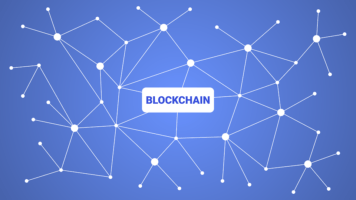what is Blockchain Technology?
If you try to sneak into this mystery called blockchain, then you will recall in horror because of the pure opacity of  the technical terms that are often used to construct it. Therefore, let’s discuss the actual situation of the blockchain before we can deeply blockchain technology explained may change the world.
the technical terms that are often used to construct it. Therefore, let’s discuss the actual situation of the blockchain before we can deeply blockchain technology explained may change the world.
In the simplest terms, a blockchain is a digital ledger of transactions, unlike the ledgers we have been using for centuries to record sales and purchases. In fact, the function of this digital ledger is very similar to the traditional ledger because it records the debit and credit between people. This is the core concept behind the blockchain; the difference is who owns the ledger and validates the transaction.
In traditional transactions, payment from one person to another involves an intermediary to facilitate the transaction. For example, Rob wanted to transfer 20 pounds to Melanie. He can provide cash in the form of a 20-pound bill, or he can use some sort of banking application to transfer money directly into her bank account. In both cases, the bank is the middleman who verifies the transaction: When he withdraws money from the ATM, Rob’s funds are verified or verified by the application when digital transfers are made. The bank decides whether the transaction should continue. The bank also has a record of all Rob’s transactions, and the bank is solely responsible for updating the transaction each time Rob pays a person or proceeds into an account. In other words, the bank owns and controls the books and everything goes through the bank. How to setup blockchain
This is a big responsibility, so Rob thinks that he can trust his bank is very important, otherwise he will not risk adventuring with them. He needs to be convinced that the bank will not deceive him, will not lose his money, will not be robbed, and will not disappear overnight. This trust demand has supported almost all the major behaviors and aspects of the overall financial industry. Even if the bank was found to be irresponsible for our funds during the 2008 financial crisis, the government (another middleman) chose to get them out of the woods rather than risking it. The danger of destroying the final piece of trust.
Blockchains operate differently in one key aspect: they are completely decentralized. There is no central clearinghouse like a bank, nor a central ledger held by one entity. Instead, the ledgers are distributed over a large computer network called a node, and each computer keeps a copy of the entire ledger on its own hard drive. These nodes are interconnected by software called a peer-to-peer (P2P) client, which synchronizes data across the node network and ensures that everyone has the same version of the ledger at any given point in time.
When a new transaction enters the blockchain, it is first encrypted using the most advanced encryption technology. Once encrypted, the transaction is converted into a block, which is basically a term for a new set of transactions for encryption. The block is then sent (or broadcast) into the computer node’s network where it is authenticated by the node and, once verified, passed through the network so that the block can be added to the end of the ledger on everyone’s computer, In the list of all previous blocks. This is called chaining, so the technology is called blockchain.
Once approved and recorded in the ledger, the transaction can be completed. This is how crypto currencies such as Bitcoin work.
The elimination of accountability and trust
What are the advantages of this system to banks or CCASS? Why does Rob use bitcoin instead of ordinary currency?
The answer is trust. As mentioned earlier, in the banking system, Rob believes that his bank’s protection of his funds and proper handling is crucial. In order to ensure this happens, there is a huge regulatory system to verify the bank’s behavior and ensure that it meets its purpose. Then, the government supervises the regulatory agencies and creates a hierarchical inspection system whose sole purpose is to help prevent mistakes and bad behavior. In other words, the existence of organizations like the Financial Services Authority is precisely because banks cannot rely on their own trust. Banks often make mistakes and misbehaving because we have seen too many times. When you have a single source of power, power is often abused or abused. The trust relationship between people and banks is ambiguous and unstable: we don’t really believe them, but we don’t think there are many options.bitcoin mining hardware
Blockchain systems do not require you to trust them all. All transactions (blocks) in the blockchain are verified by nodes in the network before being added to the ledger, which means there is no single point of failure and there is no single approval channel. If hackers want to successfully tamper with the books on the blockchain, they will have to compromise millions of computers at the same time, which is almost impossible. Hackers can hardly defeat blockchain networks because they need to shut down every computer in a computer network that is distributed around the world.
The encryption process itself is also a key factor. Blockchains like Bitcoin use deliberately difficult programs for verification. In the case of bitcoin, nodes perform verification by nodes that perform intentional processors and time-intensive calculations, often in the form of puzzles or complex mathematical problems, which means that verification is neither immediate nor accessible. Nodes that actually use resources for block verification will receive transaction fees and new minted bitcoin rewards. This has the function of motivating people to become nodes (because processing blocks like this require a very powerful computer and a lot of power), while also processing the process of generating currency units. This is called mining because it requires considerable effort (in this case, a computer) to produce new goods. This also means that transactions are verified in the most independent way possible, and more independent than government-regulated organizations like the FSA.
This decentralized, democratic and highly secure blockchain nature means that they can operate without supervision (they are self-regulating), government or other opaque intermediaries. Their working principle is that people trust each other, not trust each other.
Let the meaning of this sink occur over time, and the stimulus on the blockchain begins to make sense.
Smart contract
It has become very interesting that blockchains are used outside of cryptocurrencies such as Bitcoin. Given that one of the basic principles of the blockchain system is the secure, independent verification of transactions, it is easy to imagine that this type of process has other value. Not surprisingly, many of these applications are already in use or in development. Some of the best are:
Smart Contracts (Ethernet): Probably the most exciting blockchain development after Bitcoin, smart contracts are blocks that contain code that must be executed to implement the contract. The code can be anything, as long as the computer can execute it, but in short, it means that you can use blockchain technology (through its independent verification, unreliable architecture and security) to create a kind of transaction of any kind Managed system. For example, if you are a web designer, you can create a contract to verify that a new customer’s website is activated and then automatically release funds to you. No longer chase or invoice. Smart contracts are also used to prove ownership of assets, such as property or art. The potential for reducing fraud through this method is enormous.
Cloud storage (Storj): Cloud computing has completely changed the network and brought about the emergence of big data, which in turn started a new AI revolution. But most cloud-based systems run on servers stored in a single-location server farm owned by an entity (Amazon, Rackspace, Google, etc.). This raises all the same issues as the banking system because your data is controlled by a single, opaque organization that represents a single point of failure. Distributing data over the blockchain completely eliminates the trust problem and is expected to increase reliability because blocking blockchain networks is more difficult.
ShoCard: The two biggest issues of our time are identifying theft and data protection. Due to the large number of centralized services such as Facebook holding a large amount of data about us and the efforts made by the governments of developed countries to store the digital information of their citizens in a central database, the possibility of abuse of our personal data is terrible. Blockchain technology provides you with a solution by encapsulating your key data in an encrypted block that can be verified over the blockchain network whenever you need to prove your identity. This range of applications ranges from obvious passports and internal substitutes. Card to other areas, such as changing the password. This may be great.
Digital voting: After a highly heated discussion of the impact of Russia’s recent U.S. election, digital voting has been suspected to be unreliable and vulnerable to tampering. Blockchain technology provides a way to verify that voter votes are successfully sent and remain anonymous. Not only does it reduce fraud in elections, it also increases the voter turnout rate because people can vote on their mobile phones.
Blockchain technology Setup is still in its infancy, and most applications still have a long way to go from general applications. Even if bitcoin is the most mature blockchain platform, it will be greatly affected by volatility, indicating its relative newcomer status. However, the potential of blockchains to solve some of the major problems we face today makes them a very exciting and attractive technology. I will pay attention.


